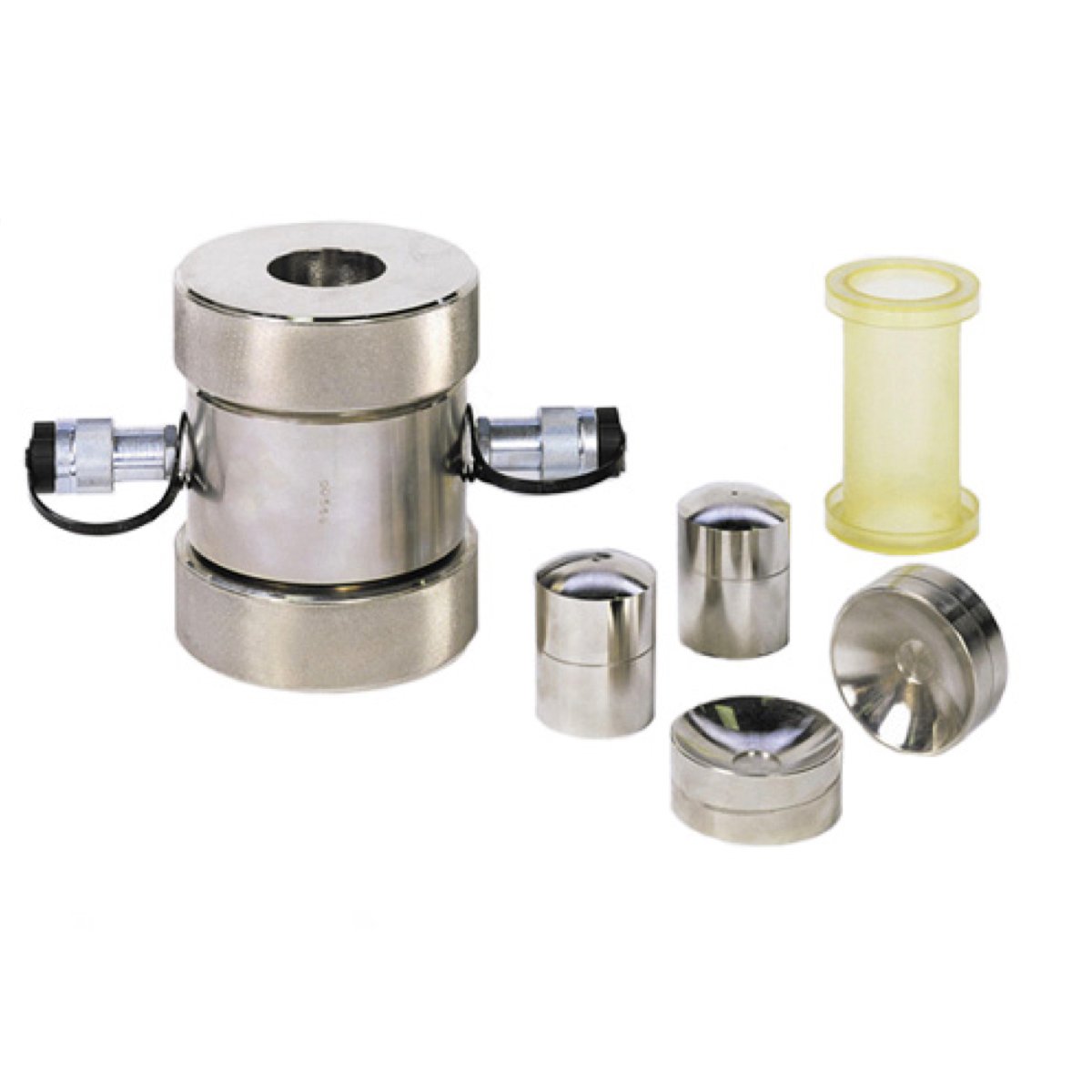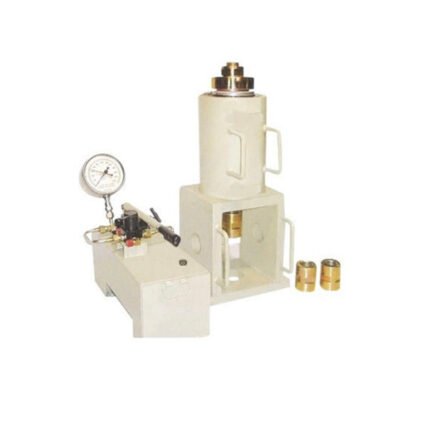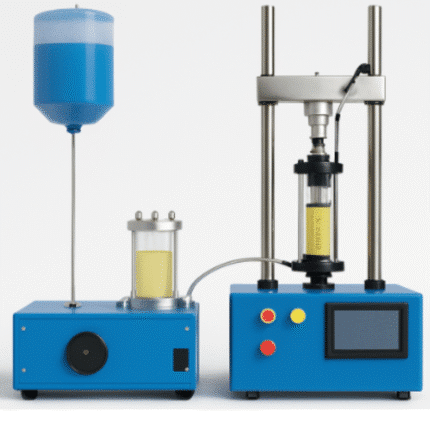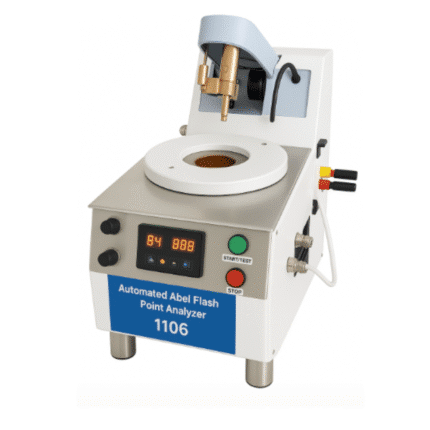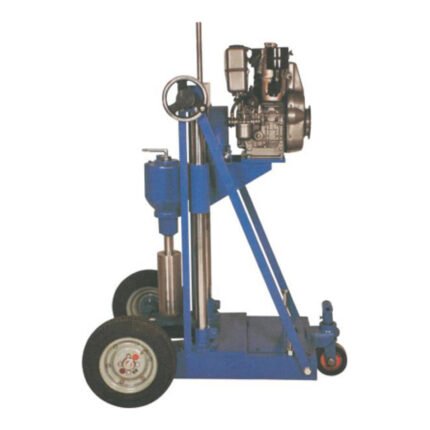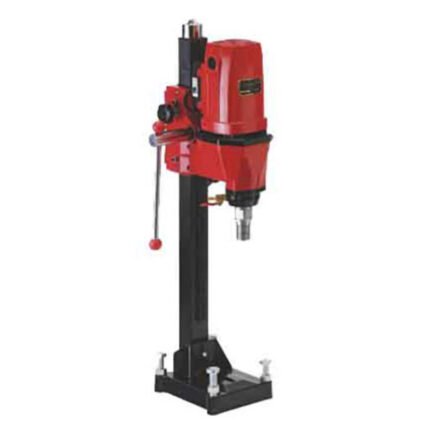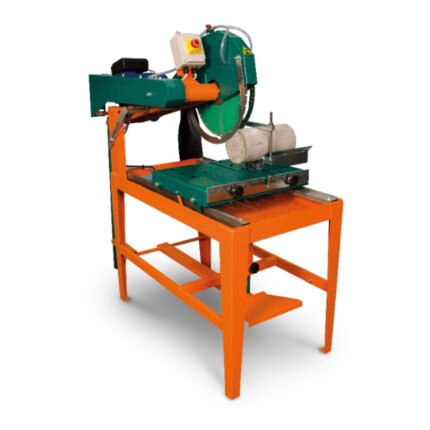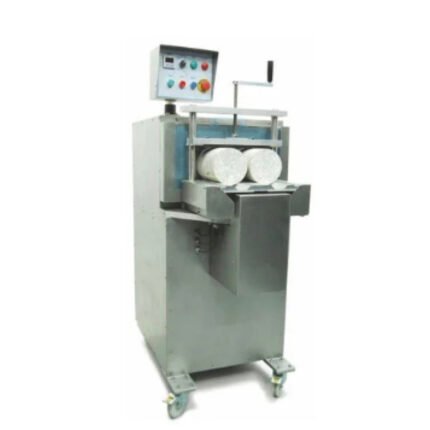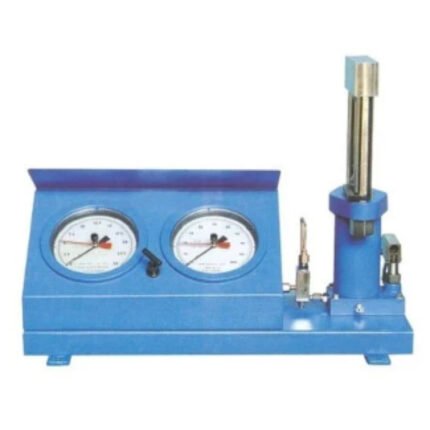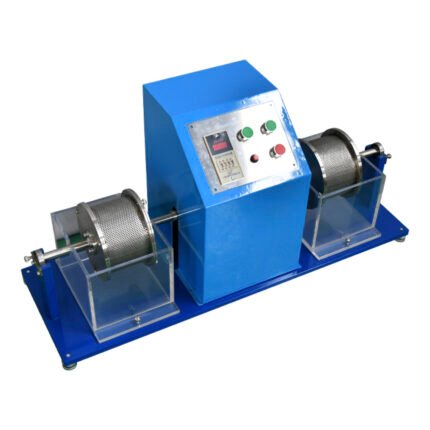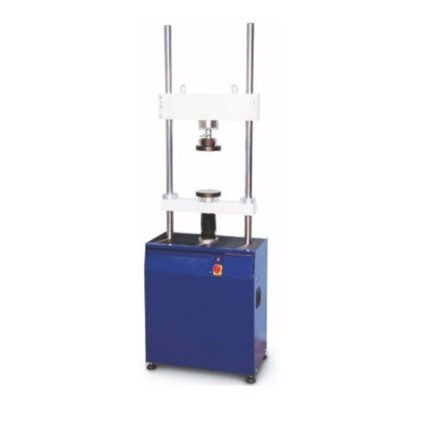AZA 1008 HOEK TRIAXIAL
- Designed for triaxial testing on rock cores
- Supports high confining pressures
- Compatible with servo-controlled systems
- Precision-machined stainless steel body
- ASTM and IS standard compliant
Description
Hoek triaxial testing equipment is engineered for precision rock testing under simulated underground pressure conditions. It plays a vital role in determining the mechanical behavior of rock samples in response to confining pressures, enabling engineers and geologists to design safer structures such as tunnels, slopes, dams, and underground mines.
The Hoek triaxial cell consists of a stainless steel pressure vessel that houses a cylindrical rock specimen encased in a rubber membrane. Confining fluid is introduced around the sample to simulate hydrostatic pressure, and an axial load is applied vertically using a loading frame. This setup replicates the three-dimensional stress conditions rocks experience in natural environments. The equipment facilitates measurement of peak compressive strength, deformation characteristics, and moduli of elasticity.
This model supports a range of rock core sizes, most commonly 38 mm (NX), 50 mm, and 54 mm, making it highly adaptable for multiple testing needs. The robust chamber is designed to handle confining pressures up to 60 MPa or more. Precision-engineered stainless steel construction ensures longevity and accurate alignment during testing.
Designed for compatibility with ASTM D7012 and ISRM standards, the Hoek triaxial apparatus is an essential component in any laboratory conducting advanced rock mechanics testing. Whether for basic geotechnical investigations or high-stakes mining operations, the data generated by this system supports risk assessment, design optimization, and failure prediction.
The system integrates with both manual and servo-controlled compression testing machines. It also supports data acquisition through strain gauges, LVDTs, and digital load indicators, allowing for real-time recording and graphing of load-displacement curves. The cell can be used with lubricated pistons to reduce friction and enhance accuracy, especially when measuring elastic properties.
In academic environments, the Hoek triaxial system is used for training and research, offering a hands-on tool to understand rock deformation, fracture mechanisms, and strength parameters under multi-axial loading. In commercial settings, it’s relied upon for critical design inputs in infrastructure and resource extraction.
The unit is supplied with essential accessories including loading caps, rubber membranes, sealing rings, drainage ports, and pressure connections. Optional upgrades include pore pressure transducers, hydraulic intensifiers, and computer-integrated systems for automated control and analysis.
Specifications:
| Parameter | Specification |
|---|---|
| Sample Diameter | 38 mm (NX), 50 mm, 54 mm (optional sizes) |
| Confining Pressure Range | Up to 60 MPa |
| Cell Material | High-grade stainless steel |
| Sealing System | Neoprene or nitrile rubber membranes |
| Piston Travel | 25 mm to 50 mm (model-dependent) |
| Ports | Axial loading, confining pressure, drainage |
| Compatibility | Servo-controlled or manual loading frames |
| Standards Compliance | ASTM D7012, ISRM |
| Data Acquisition | Compatible with strain gauges, LVDTs |
| Weight | Approx. 20–30 kg |
FAQ:
Q1: What is a Hoek triaxial cell used for?
It is used to simulate in-situ stress conditions and measure the strength and deformation properties of rock cores.
Q2: What pressure levels can it withstand?
This unit supports confining pressures up to 60 MPa or more, depending on the model.
Q3: What rock core sizes does it support?
Standard sizes include 38 mm (NX), with optional adapters for 50 mm and 54 mm samples.
Q4: Is this cell compatible with digital testing systems?
Yes. It works with digital compression machines and DAQ systems for automated testing and data recording.
Q5: What standards does it follow?
The system is compliant with ASTM D7012 and ISRM-recommended rock mechanics protocols.
Additional information
| Sample Diameter |
38 mm (NX), 50 mm, 54 mm (optional sizes) |
|---|---|
| Confining Pressure Range |
Up to 60 MPa |
| Cell Material |
High-grade stainless steel |
| Sealing System |
Neoprene or nitrile rubber membranes |
You may also like…
Advanced Triaxial Test System (UU–CU–CD Capable) (AZA 1296)
- UU–CU–CD test modes for complete soil strength profiling
- Automated control of pressure, load, and drainage
- Compatible with clay, silt, sand, and mixed soils
- Integrated data acquisition and real-time graphing
- Meets ASTM D2850, D4767, BS1377, AASHTO standards
- Ideal for geotechnical, research, and academic use
Air Bag Trainer (Model AZA1246)
Alternator Trainer (Model AZA1247)
Arc Welding Machine (AZA 1234)
AutoDist‑86 Glass Distillation (AZA 1282)
AutoFlash – Automated Abel Flash Point Analyzer( AZA 1277)
AZA Lab's AutoFlash-1277 is a fully automated, microcontroller-based Abel Flash Point Analyzer designed to accurately determine the flash points of combustible liquids. Conforming to IP 170, ISO 13736, and IS 1448 (P:20) standards, it ensures precise and safe analysis of samples in the temperature range of -30°C to 70°C, extendable up to 110°C.
Equipped with a built-in PC and touchscreen display, the AutoFlash-170 delivers intuitive operation, automated calibration, advanced ignition options, and rapid heating procedures for high-efficiency testing. Ideal for laboratories, petrochemical industries, and quality control applications, this standalone unit streamlines the testing process with enhanced accuracy, safety interlocks, and programmable procedures.
Related products
AZA 0994 CORE CUTTING/CORE DRILLING MACHINE (PETROL)
AZA 0996 CORE CUTTING/CORE DRILLING MACHINE (MOTORISED)
AZA 0997 ROCK/CONCRETE CUTTING MACHINE
- Exceptional Power: Designed for cutting through tough rock and reinforced concrete.
- Precision Control: Achieves accurate and clean cuts in challenging materials.
- Built to Last: Heavy-duty construction ensures durability in extreme conditions.
- Versatile Applications: Ideal for mining, quarrying, demolition, and infrastructure projects.
- Operator Comfort: Ergonomic design for reduced fatigue during demanding tasks.
AZA 1001 AUTOMATIC GRINDING MACHINE
AZA 1002 POINT LOAD INDEX TESTER
- Measures point load strength index of rocks
- ISRM-compliant for core and irregular samples
- Portable and easy-to-use field/lab apparatus
- Manual screw jack for precise loading
- Suitable for geological surveys & civil testing
AZA 1005 SLAKE DURABILITY APPARATUS
- Evaluates slake durability index of weak rocks
- Twin drum configuration for high accuracy
- Built per ISRM & ASTM D4644 standards
- Ideal for geotechnical labs and universities
- Stainless steel drums and drive motor included
AZA 1006 ROCK BOLT PULL OUT TEST APPARATUS
- Tests anchoring strength of rock bolts in-situ
- High precision hydraulic pull mechanism
- Portable & rugged for underground sites
- Complies with ISRM & ASTM standards
- Includes pressure gauge & dial indicator
AZA 1007 LOAD FRAME FOR UNIVERSAL COMPRESSION TEST OF ROCKS12 SPEED 200 KN
- Universal compression test machine for rock specimens
- 200 kN load capacity with 12-speed gear control
- Designed per ISRM and ASTM standards
- Heavy-duty steel frame for maximum stability
- Ideal for geotechnical and civil engineering labs

 Rock
Rock Aggregate
Aggregate Cement
Cement Concrete
Concrete Soil
Soil Steel
Steel Bitumen/Asphalt
Bitumen/Asphalt Security Survey Equipment
Security Survey Equipment General Items
General Items